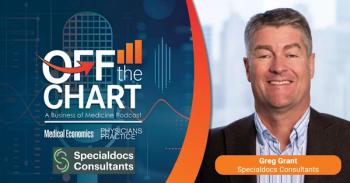
- Medical Economics January-February 2025
- Volume 102
- Issue 1
- Pages: 38
Why 2025 is a pivotal year for concierge physicians to thrive
Key Takeaways
- Independent physicians face financial challenges due to rising costs and declining reimbursements, threatening their practice sustainability.
- Concierge medicine offers a sustainable revenue model, enhancing physician autonomy and satisfaction by providing personalized care and financial stability.
The new year will be challenging for both independent and employed physicians. But chaotic times can bring enormous opportunity.
In health care, change is inevitable, but for independent and employed physicians already facing financial headwinds that threaten to topple their medical practices and the uncertain direction of a new administration, 2025 may feel particularly daunting. You don’t need a crystal ball to predict challenges, but it may require a different kind of vision to see the ever-shifting regulatory, reimbursement and te
chnological landscape as a path to genuine transformation. Almost five decades of experience advising physicians on career strategies has reinforced my view that chaotic times can bring enormous opportunities. Here’s why I believe converting to a
Challenge: Rising costs, declining reimbursements
There’s tremendous urgency for change as the environment grows increasingly unfriendly for doctors in private practice. Now representing just 22% of all practices (Physicians Advocacy Institute Report 2022-24), the independent physician is in danger of disappearing altogether. The combination of increased costs to operate a traditional practice and continual cuts to Medicare reimbursements have contributed to an overall 29% downward slide in Medicare compensation over the last two decades, according to the American Medical Association (AMA).
Reform may lie in the fate of multiple bills now in Congress. As I write this, the proposed 2.8% cut in the 2025 Medicare Physician Fee Schedule is set to go into effect on January 1, 2025, unless the Medicare Patient Access and Practice Stabilization Act is passed, eliminating the cut and introducing a 1.8% increase. Additionally, bills to implement site-neutral payments have been proposed to remove one of the major financial incentives driving hospital consolidation, and much-overdue conversations are beginning to enact permanent inflationary payment updates to Medicare reimbursements. Commercial payers, caught in a harsh spotlight emphasized by December’s tragedy, may feel pressure to follow suit with measures to help relieve the financial burdens felt by physicians and patients. But will it be too little and too late?
I believe concierge medicine offers a better solution. In the more than two decades since its inception, this model has protected doctors from the tightening vise of declining reimbursements on one side and perpetually rising operating costs and inflation on the other. It has defined economic and professional freedom for our physician clients by providing them with a reliable, predictable and, most importantly, sustainable revenue base of membership fees. The pandemic offered further evidence of the model’s undeniable success, enabling our affiliated doctors to provide personalized care and prompt attention to their smaller patient panels without financial concerns from the sharp reductions in office visits and procedures. Post pandemic, their practices have continued to grow, frequently necessitating the addition of a new physician to the team to meet increased patient demand.
Challenge: Restoring physician satisfaction
Thankfully, reported burnout levels have fallen below 50% for most physicians in the latest Medscape and AMA surveys, but as everyone agrees, there is still much work to do. Of particular note is that doctors involved in front-line primary care, such as internal medicine, family medicine, pediatrics and obstetrics/gynecology, are still experiencing higher rates of burnout. All physicians, however, including specialists in cardiology, endocrinology, rheumatology, neurology and pulmonology, continue to face ongoing financial, professional and personal pressures and limited options for change. They can seek employment in a hospital system, join a larger multispecialty group, leave medicine altogether, or convert to an alternative practice model.
At Specialdocs, we have long championed the concierge medicine solution, proudly bearing witness to its lifesaving impact on our affiliated doctors across the country. Whether it’s a beleaguered physician mom struggling to achieve work-life balance, a discouraged midlife doctor reluctantly preparing for early retirement or a young doctor frustrated with the impersonality of practicing in a large hospital system, conversion to our model has ushered in a new era of unparalleled career satisfaction.
Challenge: Adapting to rapid developments in technology
In 2025, the power of AI will likely increasingly be deployed to ease the administrative burden by streamlining tasks such as coding, scribing and managing prior authorizations and reimbursement denials. With AI’s ability to process and analyze information far more quickly than the human brain, its potential to enhance diagnoses and treatments is exhilarating. But we must proceed with caution, as being too early an adopter is frequently tantamount to being wrong. Hence, well-defined guardrails will become even more imperative in 2025, as will a firmer understanding of what cannot be achieved –– chiefly, replacing the sacrosanct physician-patient relationships built over a lifetime.
Challenge: Delivering value-based care
Since 2010, the shift from fee-for-service to fee-for-
I have long maintained that concierge medicine is the only model that delivers on the pillars of value and quality in health care by benefiting physicians, patients, payers/employers and the health care system. Our physician clients treasure the rare gift of time to truly personalize their care; their patients value timely appointments and being seen before a serious illness develops; payers see fewer claims from concierge patients because of shorter hospital stays and decreased readmissions; and everyone benefits from the dramatic reduction in visits to the emergency room or urgent care facilities.
2025 can be a year of progress, action and optimism if you seize the opportunity for change.
Terry Bauer is the CEO of
Articles in this issue
10 months ago
The hidden cost of data overload10 months ago
5 steps to implement AI in your practice10 months ago
Helping patients avoid obesity medicine scams10 months ago
The obesity drug revolutionNewsletter
Stay informed and empowered with Medical Economics enewsletter, delivering expert insights, financial strategies, practice management tips and technology trends — tailored for today’s physicians.








